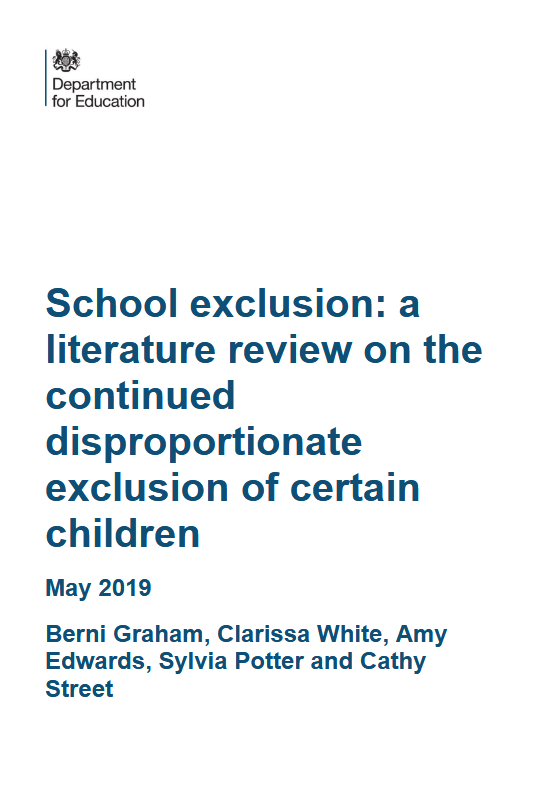
Technical data and the Government’s response.
The school culture, staff diversity and training, competitive exam focus and the support and nurture available especially around the period of transitioning from primary to secondary settings were also found to be important.
Graham,B., White, C., Edwards, A, Street, C., Potter, S., School exclusion: a literature review on the continued disproportionate exclusion of certain children, DfE, London, May 2019.
This rapid review supported the wider Timpson Review, to explore the continued practice to disproportionately exclude Black, Minority Ethnic and some other groups of children from school.
Over 200 sources were found of which 115 fitting the precise search criteria were included. The literature consistently noted that certain vulnerabilities, individually or combined, increased a child’s risk of exclusion. That risk was highest for children who had disabilities or additional needs (SEND); social, emotional or mental health needs (SEMH); were bullied; lived in poverty; and/ or were facing other life challenges, including being bullied, poor relationships with teachers, life trauma and challenges in a child’s home life.
The issues around ethnicity and class were much more nuanced than often attracts or is represented in media headlines, with Black Caribbean (rather than their African or Asian peers) as well as White working class boys and Gypsy, Roma and Traveller children faring the worst. We found a relatively small body of research exploring the question of gender: ie why boys are excluded more often than girls.
In terms of Black Caribbean boys (and sometimes girls), the evidence pointed to an interrelationship of stereotyping, low expectations and labelling some children as trouble-makers by (mostly white) teachers early on in a pupil’s school life. This set off a negative (and possibly imperceptable) chain reaction. For instance among other factors this could make children feel they did not belong in that school and subsequently underachieve.
Many researchers argued that schools do not operate in a vaccum and that exclusion policies and practice merely reflect wider cultural norms, especially along the lines of race, class and gender. Moreover, some families were much less able, or effective than others, in challenging their school’s decisions.
